
Subic Spanish Gate: Sentinel of History in Olongapo’s Naval Legacy
The Subic Spanish Gate, Olongapo’s oldest remaining structure, has withstood three significant events: the Dewey shelling of 1898, the Japanese attack of 1941, and the
Capones Island forms part of a trio alongside Camara Island and an attached islet. Situated nearly four kilometers off the coast of Pundaquit in San Antonio, Zambales, these islands are a mere 10-minute boat ride away. With light cream sand and clear turquoise waters, this small island predominantly features rocky cliffs, interspersed with light-sand beaches and rocky shores. It’s a common stop in island hopping tours around Pundaquit or San Miguel, often included in itineraries alongside renowned beach camping destinations like Anawangin Cove and Nagsasa Cove.
Capones Island forms part of a trio alongside Camara Island and an attached islet. Situated nearly four kilometers off the coast of Pundaquit in San Antonio, Zambales, these islands are a mere 10-minute boat ride away. With light cream sand and clear turquoise waters, this small island predominantly features rocky cliffs, interspersed with light-sand beaches and rocky shores. It’s a common stop in island hopping tours around Pundaquit or San Miguel, often included in itineraries alongside renowned beach camping destinations like Anawangin Cove and Nagsasa Cove.
Capones Island forms part of a trio alongside Camara Island and an attached islet. Situated nearly four kilometers off the coast of Pundaquit in San Antonio, Zambales, these islands are a mere 10-minute boat ride away. With light cream sand and clear turquoise waters, this small island predominantly features rocky cliffs, interspersed with light-sand beaches and rocky shores. It’s a common stop in island hopping tours around Pundaquit or San Miguel, often included in itineraries alongside renowned beach camping destinations like Anawangin Cove and Nagsasa Cove.
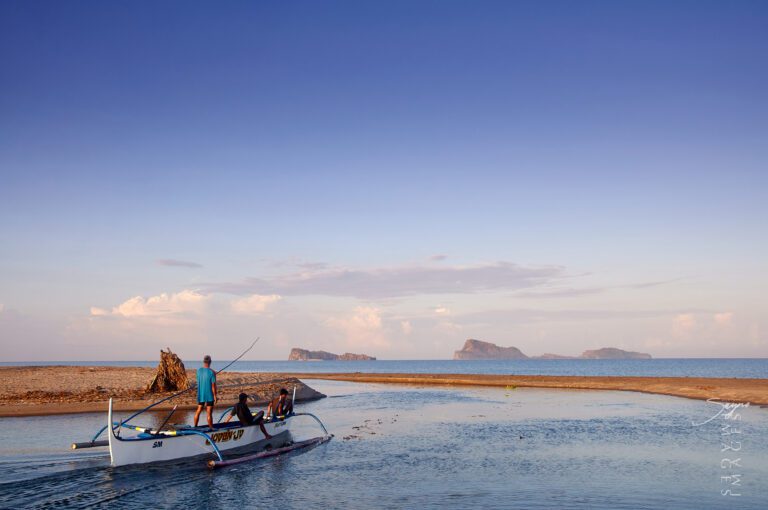
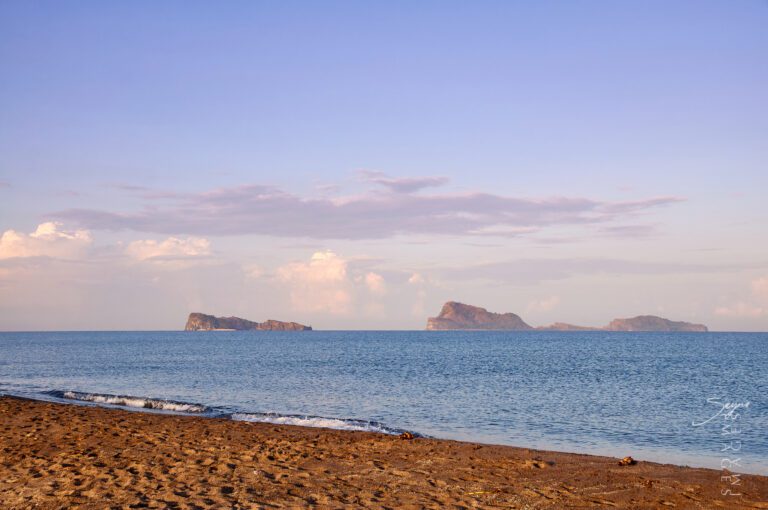
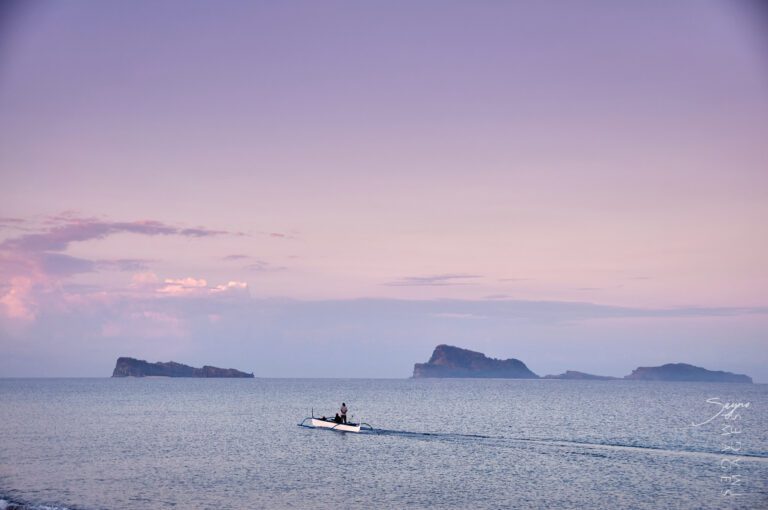
ABOVE: Captured from the shores of Pundaquit Beach, this photo frames the majestic Capones Island in all its glory. Many travelers kick off their adventure from the nearby fishing village of Pundaquit, setting out to explore this stunning island.
ABOVE: Captured from the shores of Pundaquit Beach, this photo frames the majestic Capones Island in all its glory. Many travelers kick off their adventure from the nearby fishing village of Pundaquit, setting out to explore this stunning island.
Also referred to as “Isla de Gran Capon” in Spanish, Capones Island’s distinctive whale shape is best known for its century-old lighthouse majestically perched atop the island. From this vantage point, visitors can relish a breathtaking 360-degree view encompassing Capones, Camara, and Pundaquit.
Measuring about 1.9 kilometers long by 0.4 kilometers wide, Capones Island stands as one of the smallest islands on western Luzon.
The starting point for most visitors is the fishing village of Pundaquit. To reach the island, it’s advisable to set off early in the morning, as the surrounding waters of the South China Sea can get rough, especially during the monsoon months.
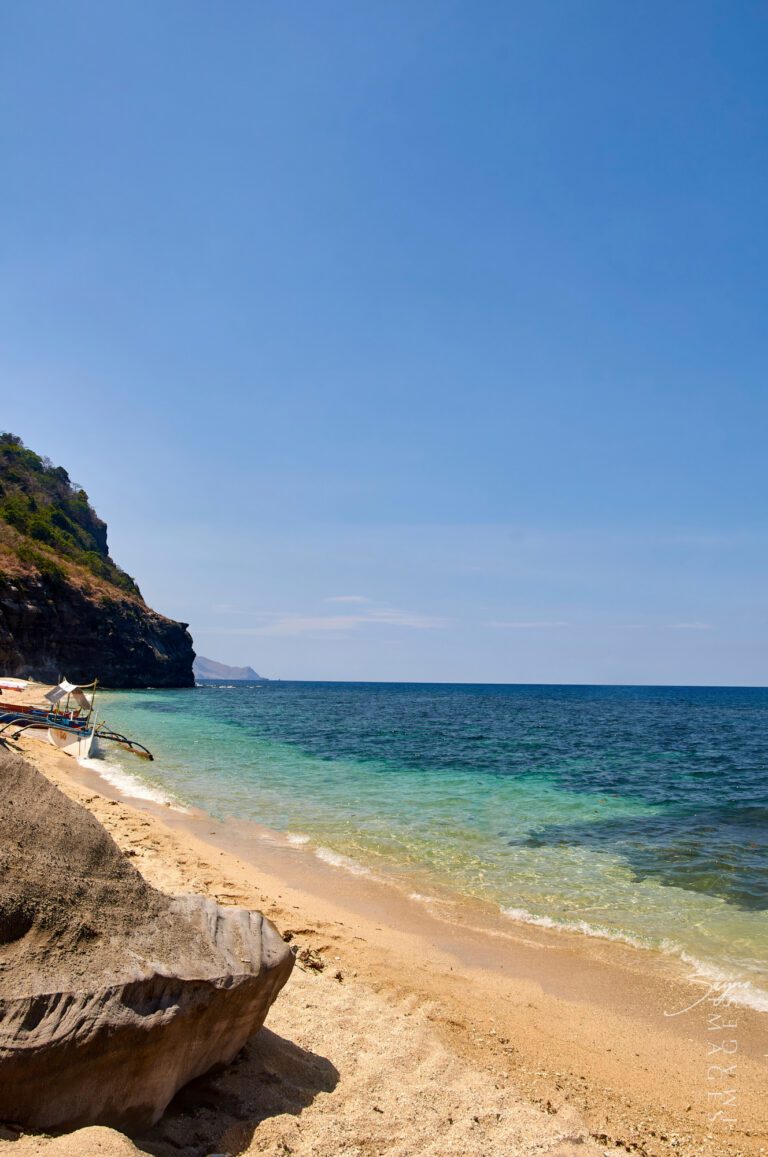
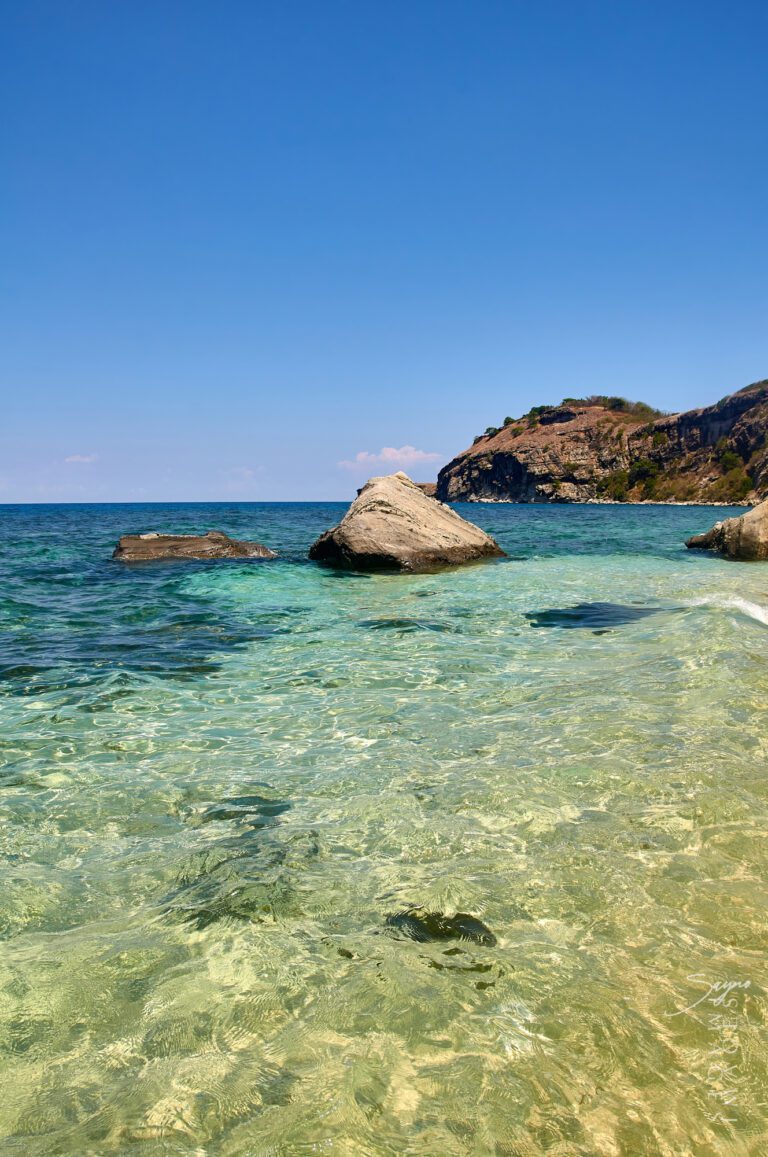
ABOVE: The eastern side of Capones Island hosts a stunning white sand beach that’s dotted with striking rocks and large boulders. It’s a perfect spot for swimming and snorkeling, offering an impressive view.
ABOVE: The eastern side of Capones Island hosts a stunning white sand beach that’s dotted with striking rocks and large boulders. It’s a perfect spot for swimming and snorkeling, offering an impressive view.
During low tide, a sandbar connecting Camara to the smaller islet becomes visible from both Camara and Pundaquit. However, docking in Camara is not feasible during this time. High tide offers the best opportunity to visit when boats can easily dock on the beach.
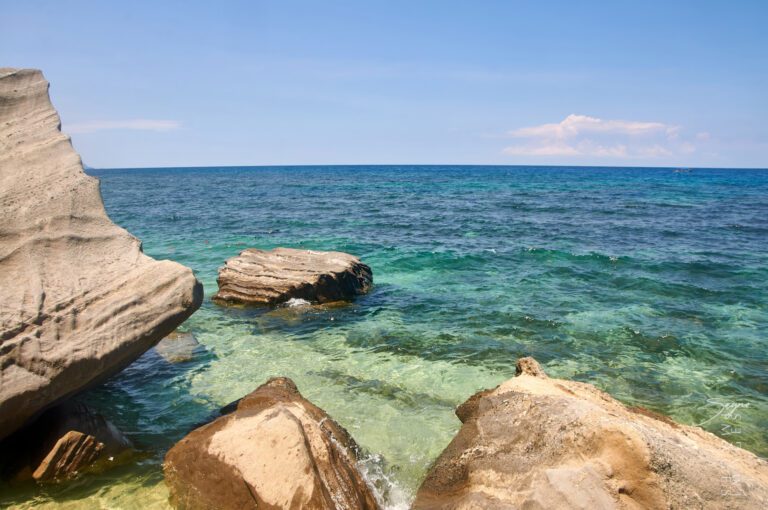
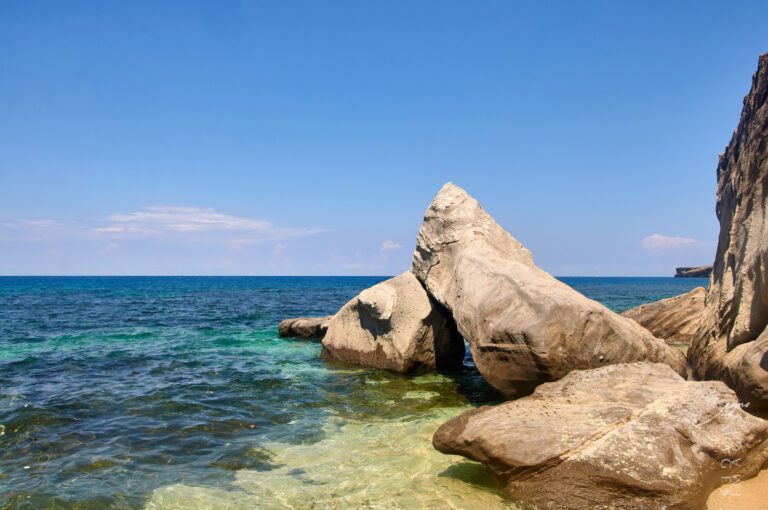
ABOVE: On the Island, you’ll find beautiful creamy sands gently meeting the clear turquoise waters, creating a stunning sight perfect for beach lovers and nature enthusiasts alike.
ABOVE: On the Island, you’ll find beautiful creamy sands gently meeting the clear turquoise waters, creating a stunning sight perfect for beach lovers and nature enthusiasts alike.
Despite its relatively barren landscape with limited plant life, the island is adorned with massive rocks and a few scattered trees, primarily on its eastern side. The eastern stretch boasts the most appealing white sand beach, featuring impressive rocks and boulders, ideal for swimming and snorkeling. Many travelers consider this spot the best for snorkeling on the island. Scaling the nearby hill rewards visitors with a stunning panoramic view of the crescent-shaped beach below, providing excellent photo opportunities.
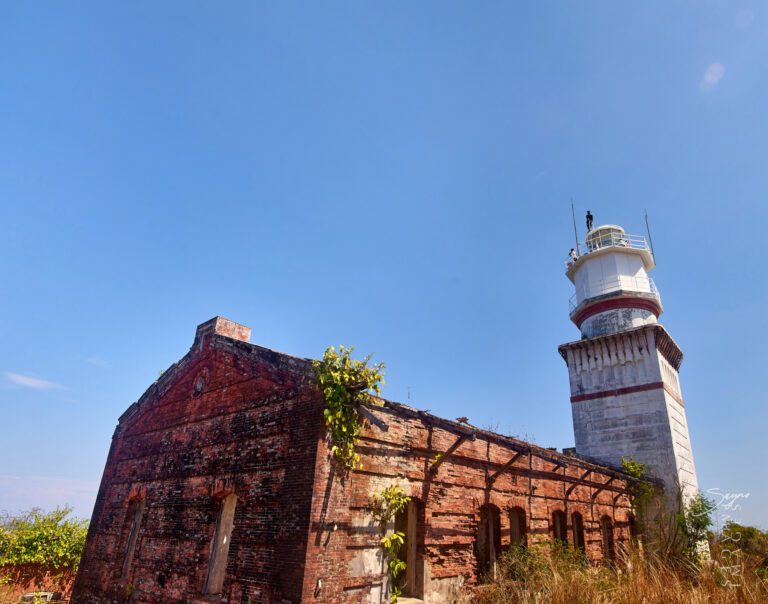
ABOVE: At Capones Island stands a historic lighthouse, standing tall for a hundred years, sitting atop the island called “Isla de Gran Capon” in Spanish. From there, you can soak in a breathtaking 360-degree view, embracing the scenic charm of Capones, Camara, and Pundaquit islands.
ABOVE: At Capones Island stands a historic lighthouse, standing tall for a hundred years, sitting atop the island called “Isla de Gran Capon” in Spanish. From there, you can soak in a breathtaking 360-degree view, embracing the scenic charm of Capones, Camara, and Pundaquit islands.
The only structure on Capones Island is the ancient Spanish lighthouse known as Faro de Punta Capones, constructed in 1890 to guide ships and warn of rocky shores. Though now in ruins and neglected, its original brick house structure still presents a striking sight.
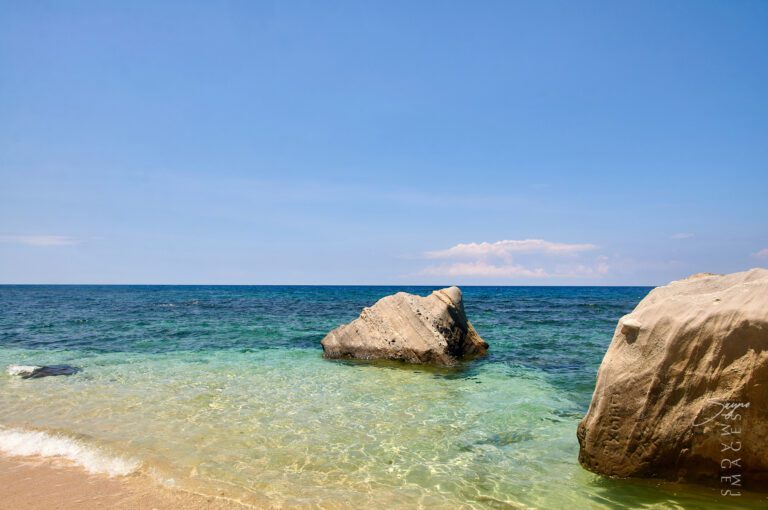
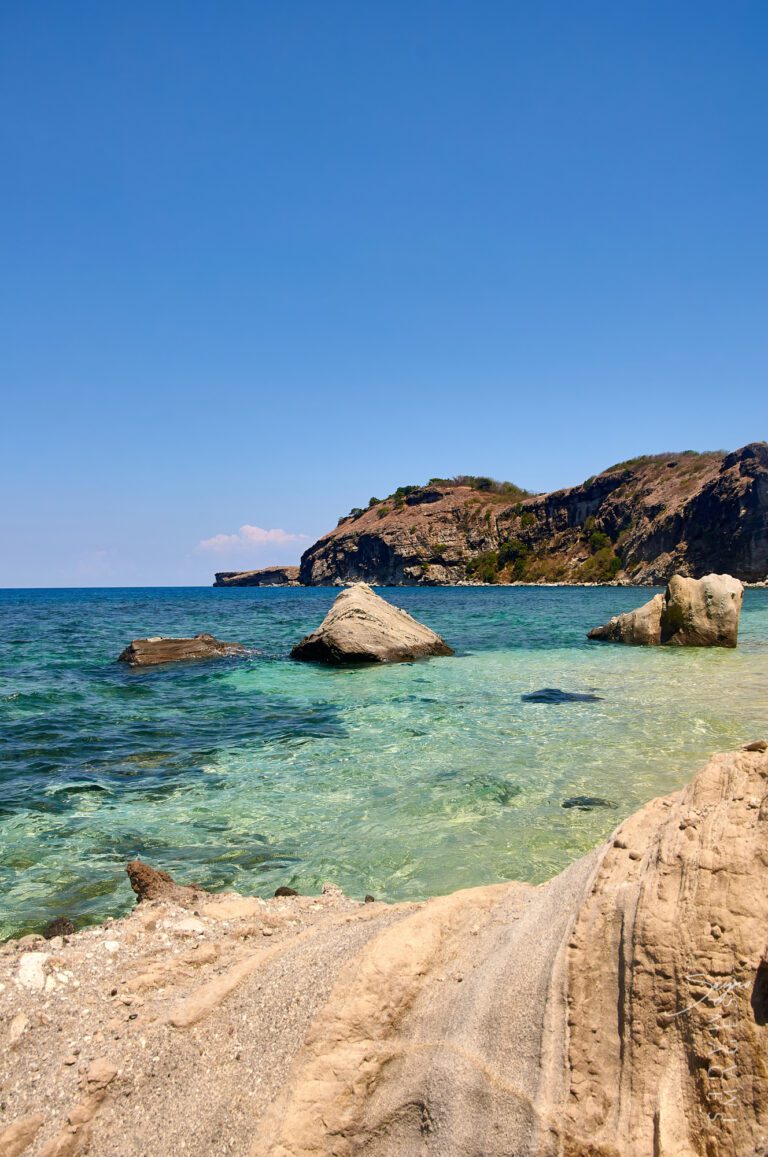

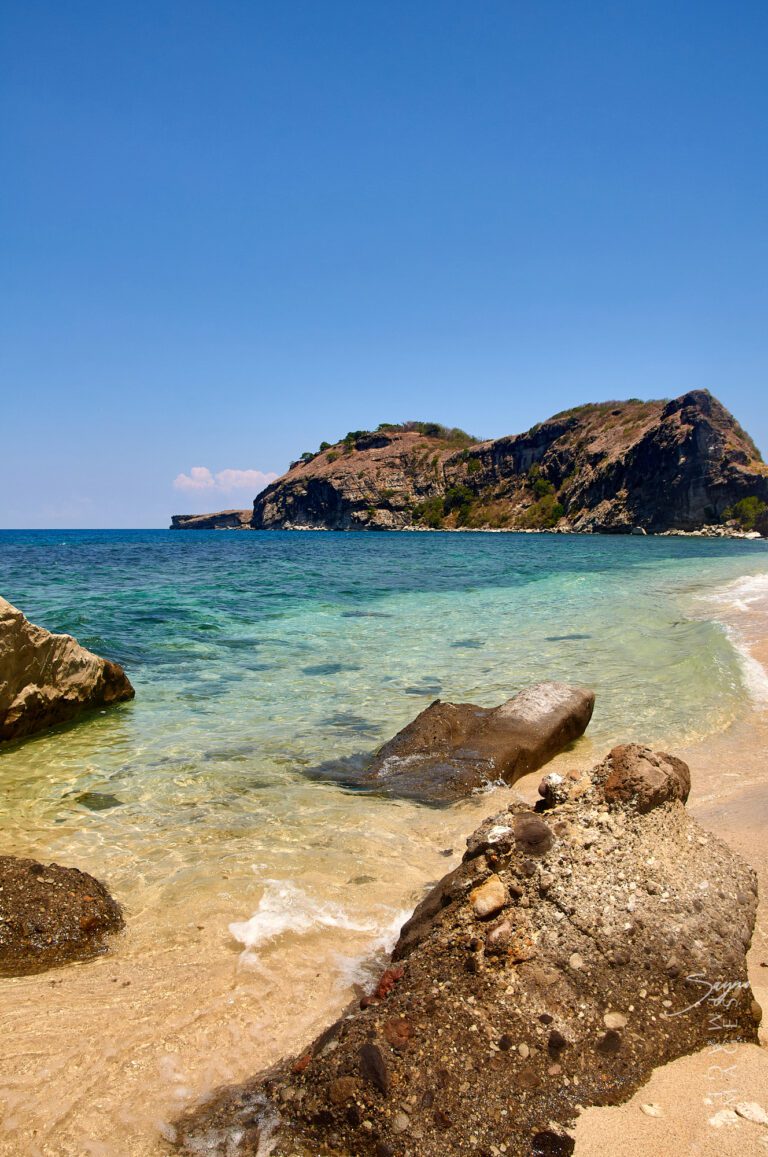
ABOVE: A sun-kissed beach adorned with stunning turquoise waters and scattered with smooth beach boulders. It’s the kind of spot that’ll have photographers itching to capture its beauty.
ABOVE: A sun-kissed beach adorned with stunning turquoise waters and scattered with smooth beach boulders. It’s the kind of spot that’ll have photographers itching to capture its beauty.
As there are no commercial establishments on the island, those planning an overnight stay should bring camping equipment, food, and drinking water. Simply inform the boatman of the intended return to San Miguel/Pundaquit.
For day-trippers not inclined toward camping, numerous hotels and restaurants are available in Pundaquit or San Miguel.
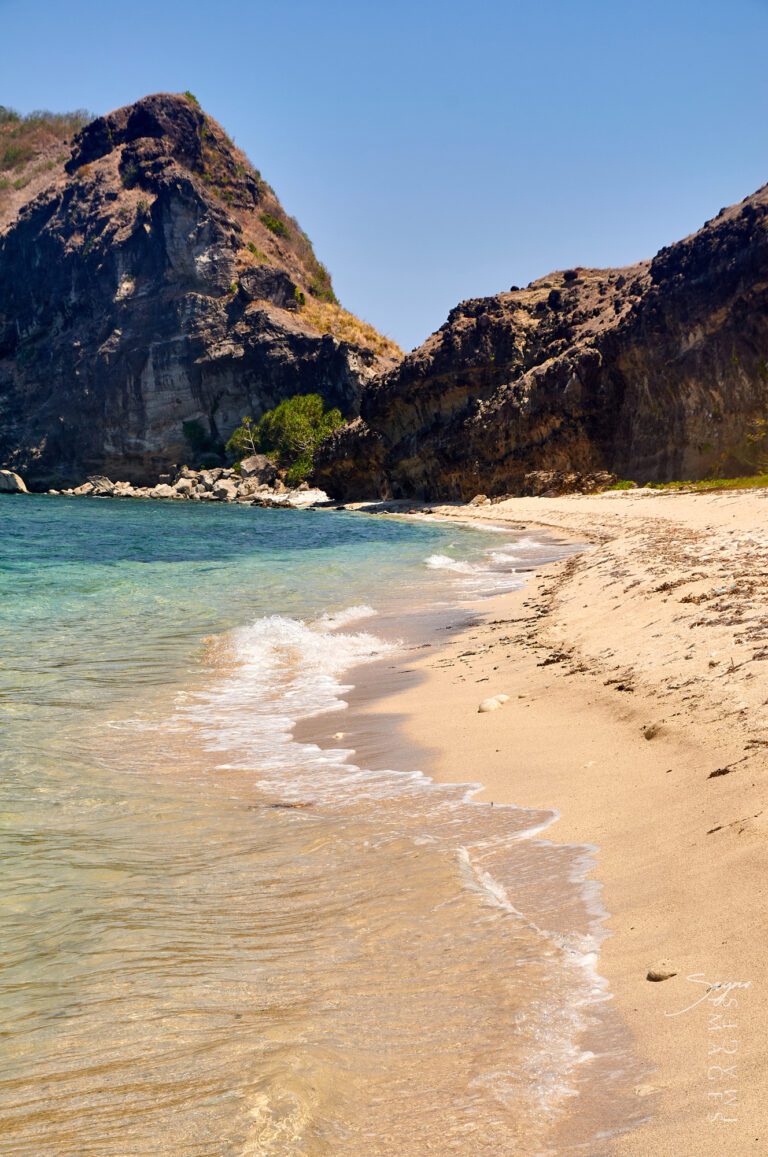
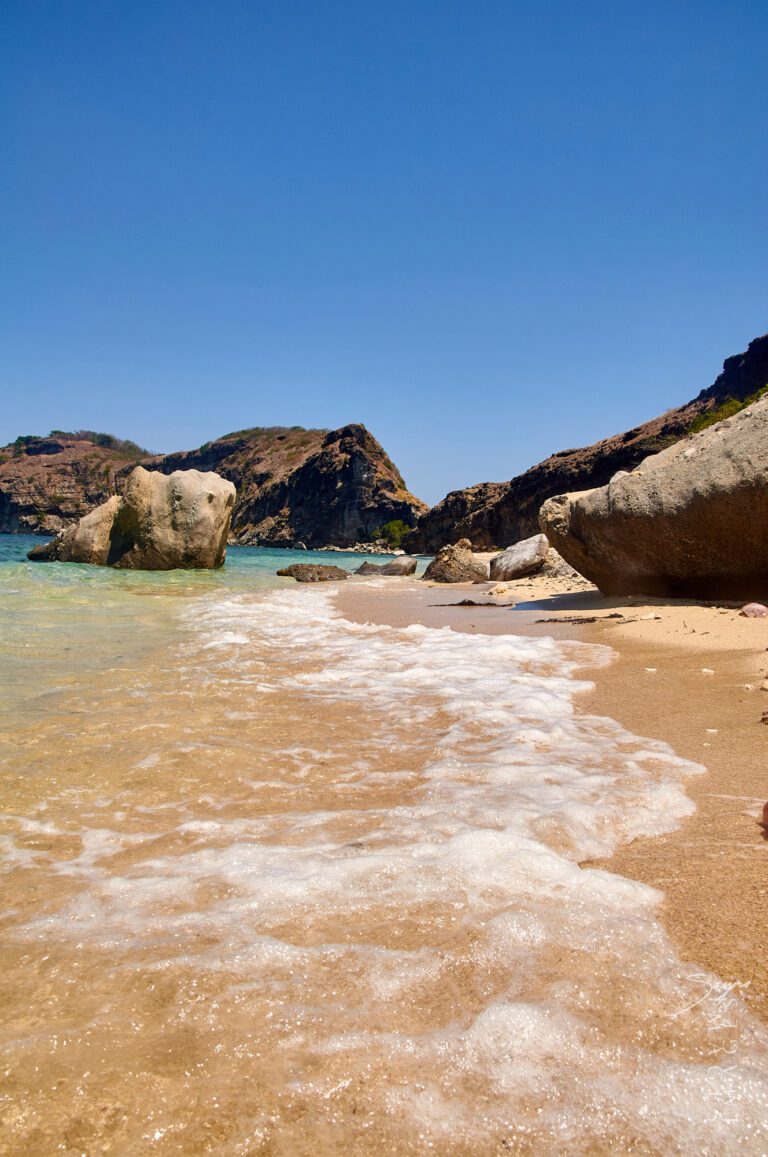
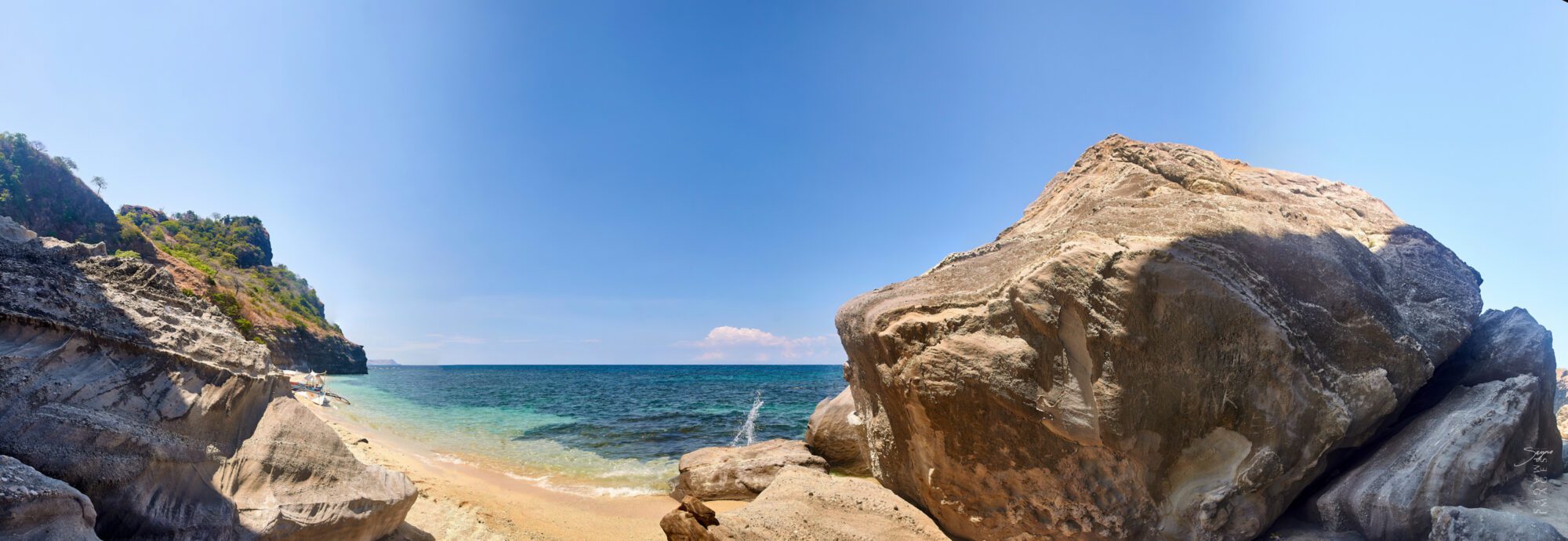


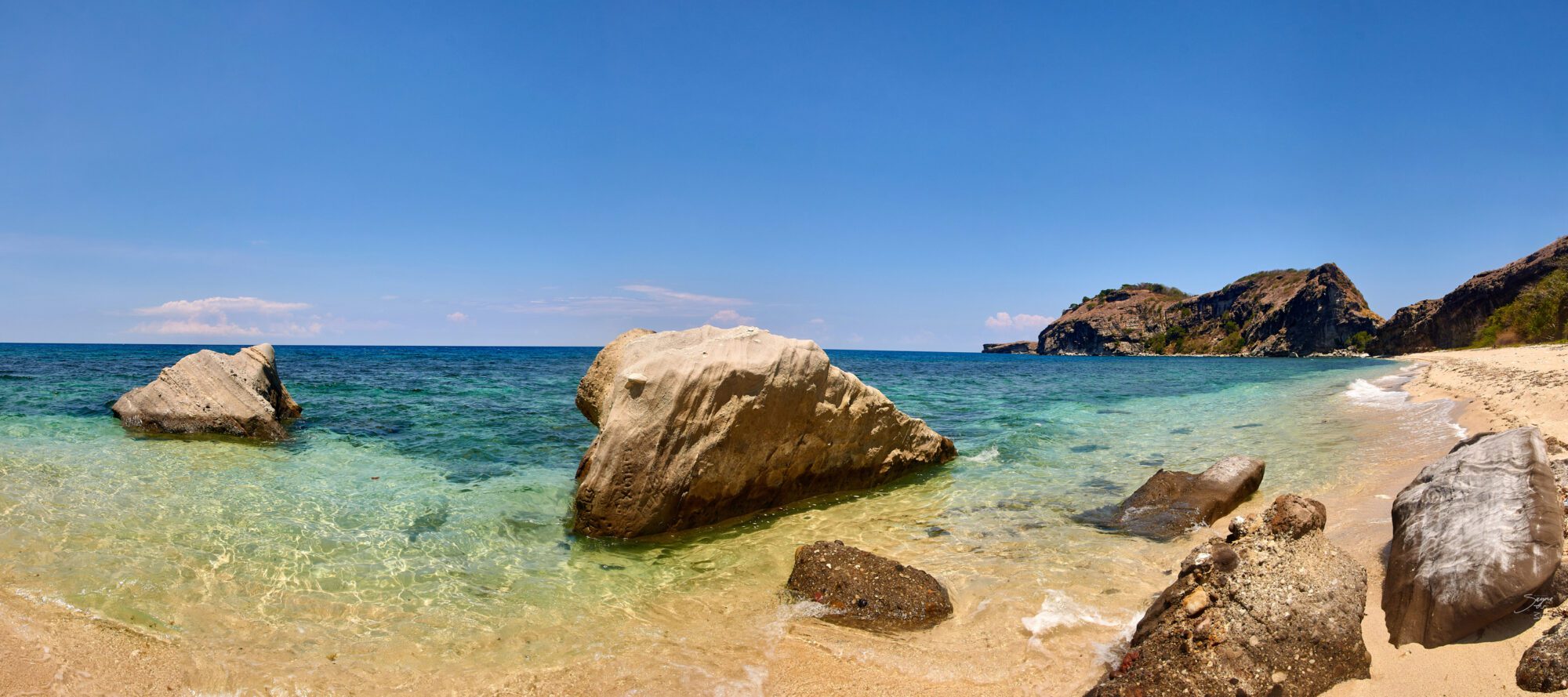

ABOVE: Along the eastern coast lies a gorgeous white sand beach with striking rocks and boulders, perfect for swimming and snorkeling. This spot is a top choice among travelers for snorkeling adventures. If you climb the hill nearby, you’ll catch an incredible panoramic view of the crescent-shaped beach, offering fantastic photo moments.
ABOVE: Along the eastern coast lies a gorgeous white sand beach with striking rocks and boulders, perfect for swimming and snorkeling. This spot is a top choice among travelers for snorkeling adventures. If you climb the hill nearby, you’ll catch an incredible panoramic view of the crescent-shaped beach, offering fantastic photo moments.
Moreover, the surrounding area offers an array of activities to explore. Discover nearby coves and islands like Anawangin Cove, Nagsasa Cove, Silanguin Cove, Talisayin Cove, and Camara Island. Hiking enthusiasts can conquer Mount Pundaquit, Mount Nagsasa, or Mount Balingkilat. Beyond these, more attractions await, such as the majestic Nagsasa Falls, the cultural richness of Casa San Miguel, the inviting shores of Pundaquit Beach, and the serene beauty of Pundaquit Falls, among others.
RELATED STORIES

The Subic Spanish Gate, Olongapo’s oldest remaining structure, has withstood three significant events: the Dewey shelling of 1898, the Japanese attack of 1941, and the
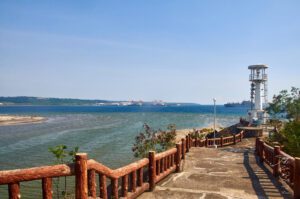
In the past, the Olongapo’s Subic Lighthouse, also known as the Subic Old Light Parola, served as a guiding light for ships, predating the establishment

Near Pundaquit in Zambales, two islands are calling to be explored. Camara Island, the closer one, sits just off Pundaquit’s shores and is easily reachable.
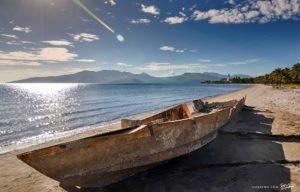
Subic bay is well known for its collection of shipwrecks from the past, as well as being visited frequently by the American Navy for military
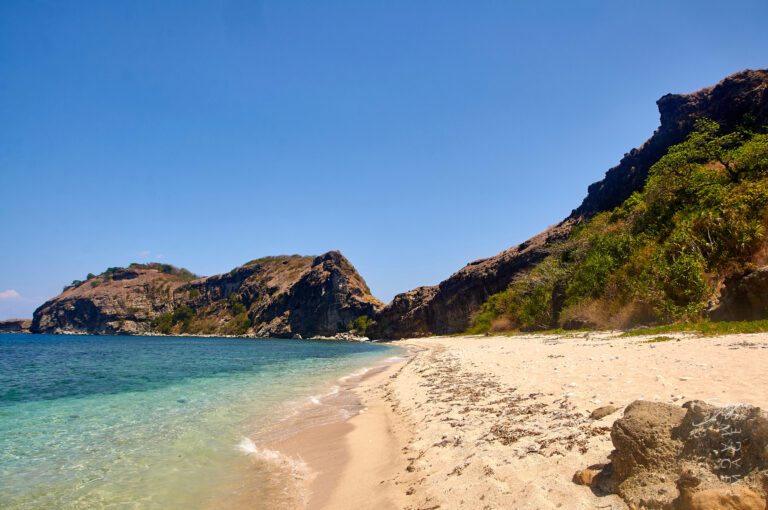
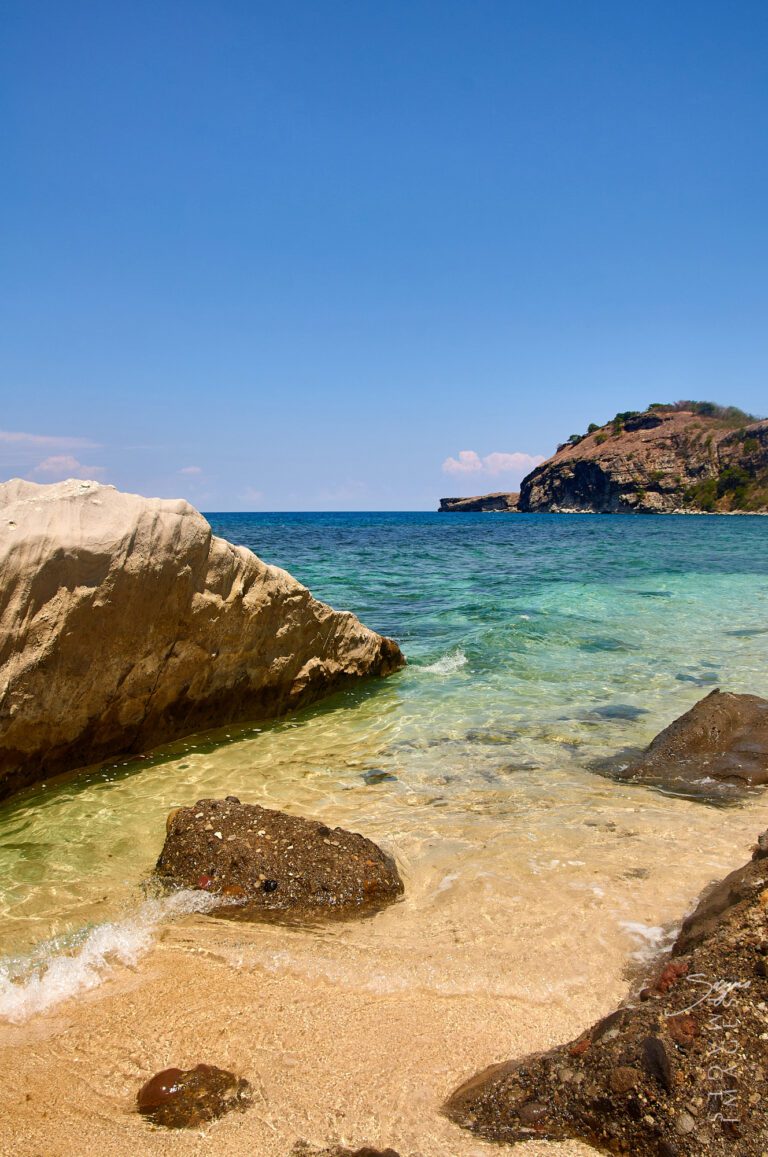
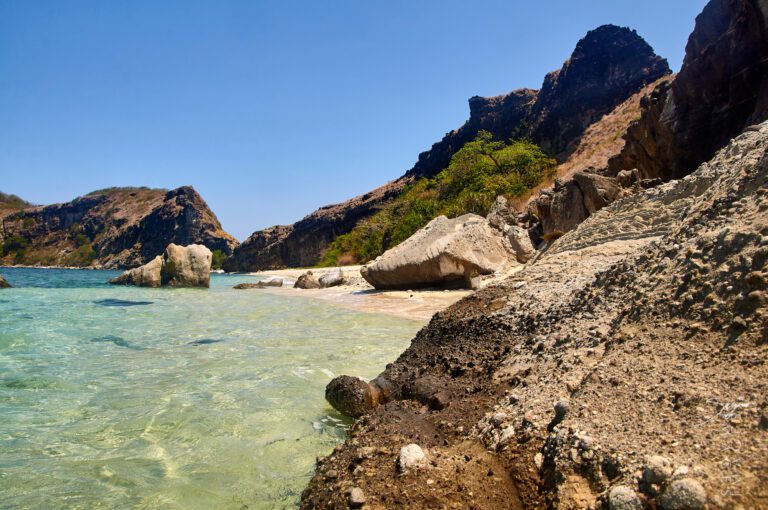
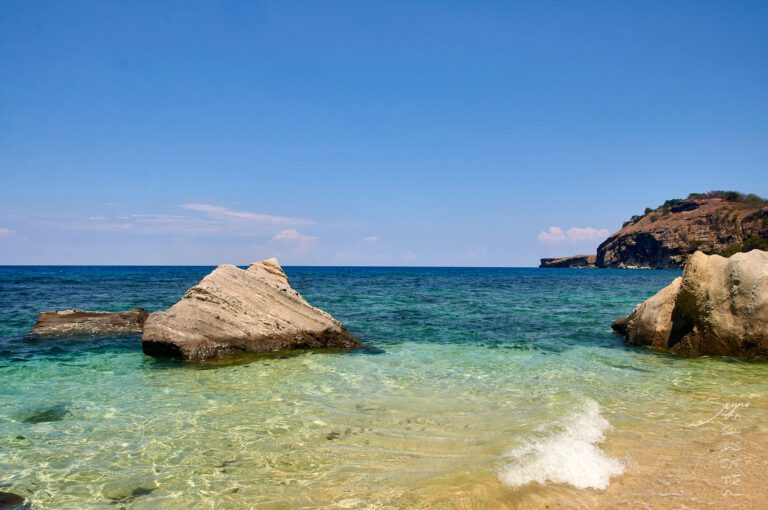
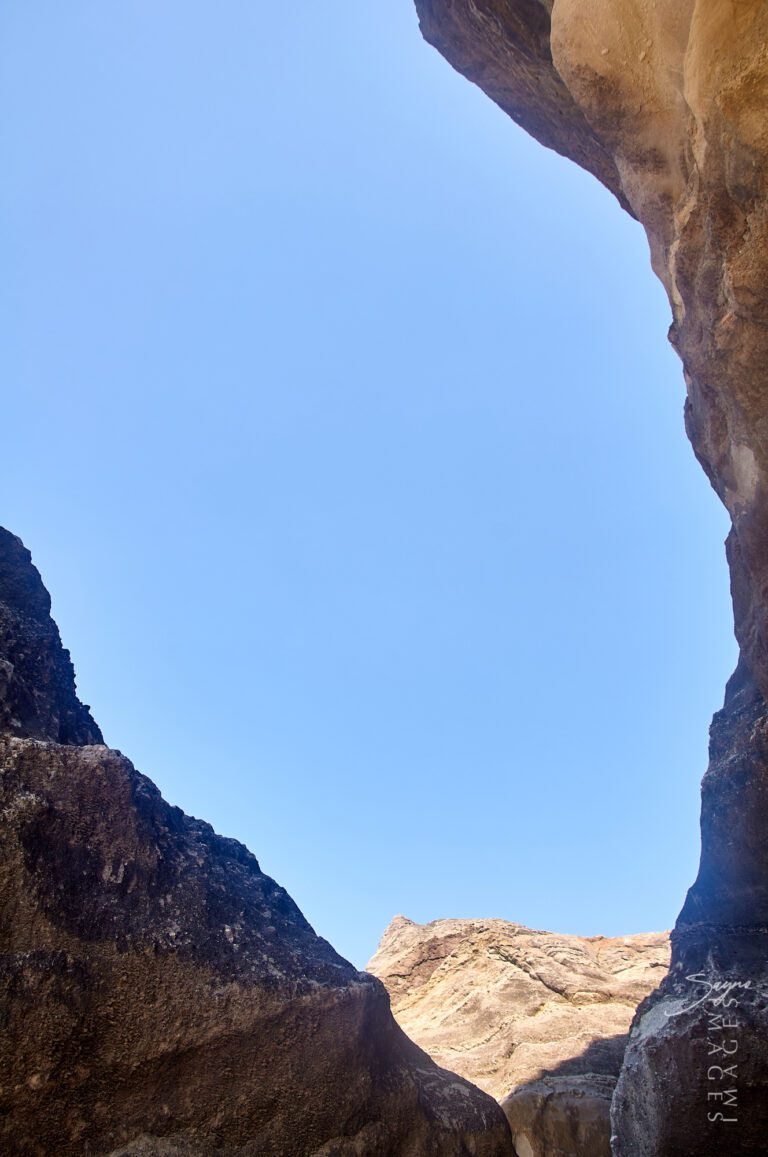

ABOVE: Capones Island boasts rugged cliffs blending seamlessly with patches of soft sandy shores and rocky outcrops, creating a striking contrast that defines its scenic charm.
ABOVE: Capones Island boasts rugged cliffs blending seamlessly with patches of soft sandy shores and rocky outcrops, creating a striking contrast that defines its scenic charm.
I’m looking forward to the stories and images leaving a lasting positive impression on you, just as they have on me. Stay connected with us on social media for a weekly exploration of travel assignments and breathtaking visuals. Our focus is on championing local tourism, showcasing small businesses, and honoring the magnificence of the Philippines through the content we curate. Join us in spreading the word by clicking the ‘share’ buttons below. Your support means the world to us.
EXPLORE MORE about

In the past, the Olongapo’s Subic Lighthouse, also known as the Subic Old Light Parola, served as a guiding light for ships, predating the establishment

Subic bay is well known for its collection of shipwrecks from the past, as well as being visited frequently by the American Navy for military

Near Pundaquit in Zambales, two islands are calling to be explored. Camara Island, the closer one, sits just off Pundaquit’s shores and is easily reachable.

Pundakit, or the Municipality of Pundaquit of San Antonio, in Zambales Province, is a fishing village that boasts a multilingual local population (Ilocano, Zambal, Tagalog)
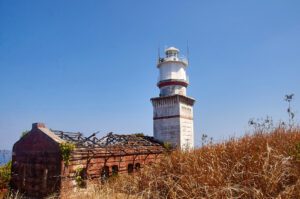
The Capones Lighthouse, also known as Faro de Punta Capones or Capones Island Lighthouse, stands proudly as a significant historic site situated along the coast

The Subic Spanish Gate, Olongapo’s oldest remaining structure, has withstood three significant events: the Dewey shelling of 1898, the Japanese attack of 1941, and the

There is no way anyone can ignore the beauty of Pamatawan River if they are traveling in the area of the coast of Pundaquit in
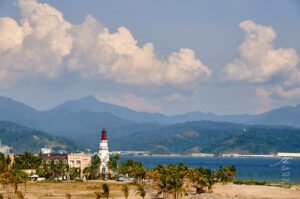
The Subic Lighthouse Marina Resort, constructed in 2006, exudes a distinctive nautical charm. The iconic lighthouse fulfills its role of guiding ships and boats to
BROWSE BY CATEGORIES